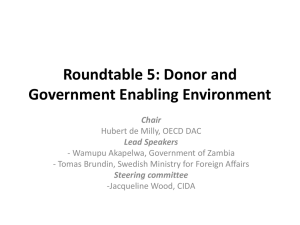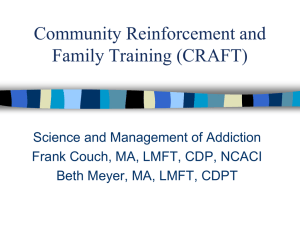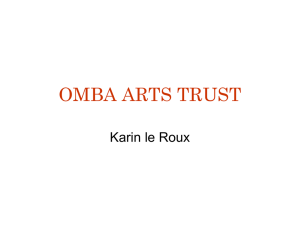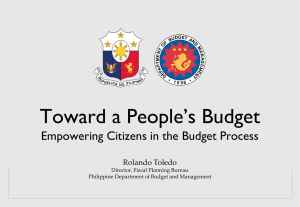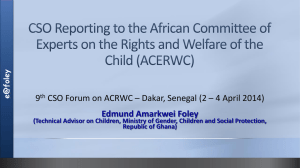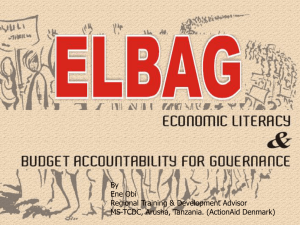CRAFT - Georgia School of Addiction Studies
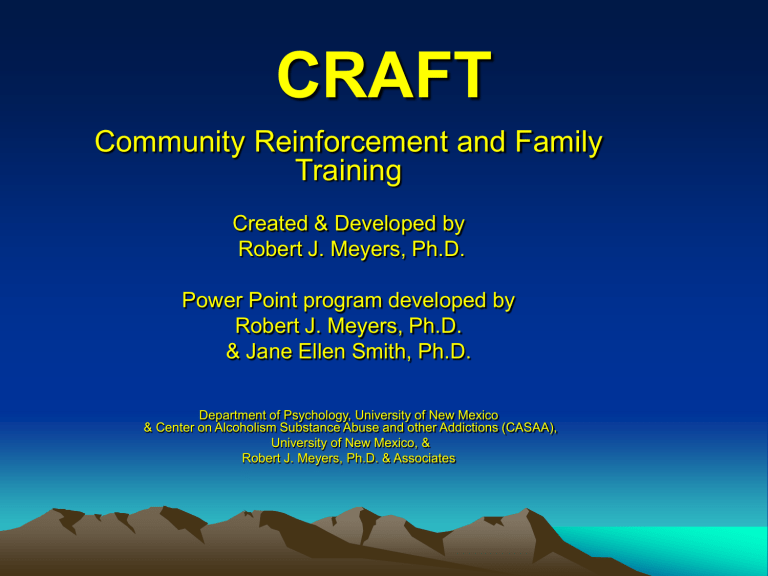
CRAFT
Community Reinforcement and Family
Training
Created & Developed by
Robert J. Meyers, Ph.D.
Power Point program developed by
Robert J. Meyers, Ph.D.
& Jane Ellen Smith, Ph.D.
Department of Psychology, University of New Mexico
& Center on Alcoholism Substance Abuse and other Addictions (CASAA),
University of New Mexico, &
Robert J. Meyers, Ph.D. & Associates
Alphabet Soup
CRAFT
CRA
Community Reinforcement and Family Training
Community Reinforcement
CSO
IP
Approach
Concerned Significant Other
Identified Patient
(the substance user)
Engagement Entering Treatment
Rationale for Working with CSOs
• Substance abusers often report that family pressure prompted treatment seeking
• CSOs can influence substance abusers’ behavior due to extensive contact
• CRA has always viewed CSOs as crucial collaborators
• CSOs also need help (victims of violence, verbal assaults, $ problems, marital conflict, etc. etc. etc.)
What is CRAFT?
The Community Reinforcement and
Family Training (CRAFT) program, works to change the patient’s environment to make a non-substance using lifestyle more rewarding than one focused on using alcohol or other drugs.
What is CRAFT?
In the CRAFT model, concerned significant others (CSOs) are the focus of the therapy instead of the substance abuser. CSOs receive training to change their interactions with the substance using person, reducing their enabling behaviors and improving their communications strategies.
Ten Basic Messages for CSOs
1.
Research has shown that family members can successfully learn techniques to engage their substanceabusing loved ones into treatment.
We cannot emphasize this enough!
Ten Basic Messages for CSOs
2.
You are not alone .
As isolated as you may feel as you cope with your loved one’s substance abuse, the fact is that you are not alone. Millions of families are at this very moment suffering from problems just like yours. Although knowing that others suffer certainly doesn’t lessen your pain, you may take hope from knowing that many have
“solved” their problems and learned to live more satisfying lives.
Ten Basic Messages for CSOs
3.
You can catch more flies with honey than vinegar.
Research has shown that it is easier to get your loved one to listen to loving words than to criticism. So choose ways to discuss about what you do like about him or her and what positive changes please you.
Ten Basic Messages for CSOs
4.
You have as many tries as you want.
Relationships are a process; they exist over time. One event or discussion rarely defines an entire relationship, so you have as many tries at improving your relationship as you wish to take. CRAFT is designed move at the pace you choose, you are in control.
People can be helped at any time.
Ten Basic Messages for CSOs
5.
You can live a happier life whether or not your loved one becomes abstinent.
An important part of CRAFT is learning to take care of yourself, regardless of your loved one’s behavior. Get Your Loved
One Sober: Alternatives to Nagging,
Pleading, and Threatening (Meyers &
Wolfe, 2004) teaches you how to do that and feel good about it.
Helping Yourself Helps.
6.
When you help yourself you help your family .
You become a positive role-model for the whole family.
Your resilience upbeat and healthy attitude can be infectious, in a good way.
Ten Basic Messages for CSOs
• 7 .
Neither you or your loved one are crazy. All people have problems and substance misuse is just that a problem.
• You did not cause it, your loved one did not set out to be an abuser, and problems have solutions.
Ten Basic Messages for CSOs
• 8.
The world is not black and white. Most problems vary in degree and difficulty.
One should think of changing a bad habit in successive approximations. Change may be easier for an individual if they have more than one option.
Labels do more harm than good
9.
Scientific studies have shown that labels Addict, Alcoholic) are a major barrier to people seeking help for substance use.
10 . You have nothing to lose and a lot to gain by getting involved.
CRAFT’S 3 MAJOR GOALS
• Reduce loved one’s harmful substance use
• Engage loved one into treatment
• Improve the functioning of CSO
(emotional, physical, relationships)
Things to Be Thinking about
Right from the Start
Always be on the lookout for engagement opportunities………
Basic Questions to Consider
• CSO’s most successful past engagement attempts?
• Best time/place/day to approach the IP with requests in general?
• Most likely reason the IP would enter treatment (for the relationship, the kids, to keep his/her job)?
• Most influential person to talk with the IP about treatment?
NIAAA
Funded in part by a grant from the National Institute on
Alcohol Abuse and Alcoholism
Traditional Interventions for
CSOs
12-Step Programs
Johnson Institute Intervention
Mental Health Counseling
Nothing
CRAFT Randomized Alcohol Study
Miller, Meyers, & Tonigan (1999)
130 CSOs randomly assigned:
• Al-Anon Facilitation Therapy (AFT)
• Johnson Institute Therapy (JII)
• Community Reinforcement and
Family Training (CRAFT)
Al-Anon Facilitation Therapy
• 12 sessions (1 hr each)
• Purpose:
-get CSO to attend Al-Anon mtgs
-help CSO accept powerlessness
-emphasize detachment & self-care
Supervisor: Joseph Nowinski, Ph.D.
Johnson Institute Intervention
• 6 sessions (2 hrs each)
• 4 sessions of preparation and training
• 1 family confrontation meeting
• 1 post-intervention evaluation
Supervisor: A. Lane Leekman, M.D.
CRAFT
• 12-sessions (1 hr each)
• Purpose:
– Empower CSO to influence change
– Train CSO in behavior change skills
– Improve CSO’s quality of life
– Prepare CSO for treatment engagement
Supervisor: Robert J. Meyers, Ph.D.
CSO Demographics
Mean age
Years of education
Females (%)
Anglos (%)
Hispanic (%)
Prior Al-Anon (%)
47
14
91
52
39
58
CRAFT (alcohol) Conclusions
• Problem drinkers who are initially unmotivated for change can be engaged in treatment through “unilateral family therapy” with CSOs
• Parents of adult children are particularly effective (An overlooked resource for engaging problem drinkers?)
NIDA
Funded by grants from the
National Institute on Drug
Abuse
CRAFT Demonstration Project
Meyers, Miller, Hill, & Tonigan (1999)
CSOs: family/friends of 62 treatment refusing illicit drug users
IP Drug of Choice (CSO report)
• Cocaine = 37%
• Marijuana = 35%
• Stimulants = 16%
• Opiates = 8%
• Sedatives/ = 3%
Tranquilizers
CSO Demographics
Females = 97%
Gender:
Males = 3%
Ethnicity:
White = 47% Hispanic = 48% Other = 5%
Range = 18 to 73
Age:
Mean = 44.7
Relationship to IP:
Spouse = 34%
Sibling = 6%
Parent = 56%
Child = 4%
Engagement
74% (46/62) of the resistant drug abusers entered treatment
CRAFT Randomized Drug Study
Meyers, Miller, Smith, & Tonigan (2002)
90 CSOs randomly assigned:
•
CRAFT
•
CRAFT + Aftercare
•
Al-Nar/FT
CSO Demographics
• 88% female
• 49% Hispanic
• Mean Age: 46 yrs.
• Relationship to IPs:
– 53% parents
– 29% spouses
– 18% other (sister, grandfather)
Treatment Engagement
CRAFT 59%
CRAFT + aftercare 77% [combined 67%]
Al-Nar/FT 29%
3 group comparison p <.0006
– no difference between 2 CRAFT conditions
More CRAFT Studies
Kirby et al., (1999)
• 32 CSOs
• CRAFT or 12-step program
• 56% spouses of IPs, 38% parents of IPs
• 75% Anglo, 23% African American
• IP’s drug of choice: 56% cocaine, 22% heroin
• CRAFT engaged 64%, 12-step 17%
• CSOs improved functioning overall
Waldron et al. (2007)
• CSOs = 42 parents/caregivers of drug abusing adolescents
• 2 parent households = 49%
• IPs: 79% Male
• 74% used cannabis
• Engagement rate = 71%
Dutcher et al. (2009)
• Study conducted in a Santa Fe, NM community agency
• Few exclusionary criteria
• 99 CSOs
• 59% Hispanic
• IPs’ Drug of choice: 90% alcohol; 7% cocaine
• Engagement rates: 55-65%
Sisson &
Azrin
1986
Miller,
Meyers, et al., 1999
CRAFT STUDIES
Kirby, et al.,
1999
Meyers,
Miller, et al.,
1999
14 CSOs 130 CSOs 32 CSOs
75% Anglo
23% AA
62 CSOs
80%
Hispanic
Alcohol Alcohol
Randomized
(CRAFT vs
12 Step)
Randomized
(CRAFT/JI
/12-step
55%
Cocaine
22% opiates
Randomized
(CRAFT vs
12-step)
37% Coca
35% MJ
16% Stim
8% opiate
Non-
Randomized
Meyers,
Miller, et al.,
2002
Waldron, et. al., 2007 adolescent
Dutcher, et al., 1999
90 CSOs
49%
Hispanic
42 CSOs
48%
Hispanic
99 CSOs
59%
Hispanic
MJ
Cocaine
MJ
Alcohol
Stimulants
Alcohol
90%
Cocaine
7%
Randomized Non-
Randomized
Non-
Randomized
Manual, et al.,2012
Group vs
Self-
Directed
40 CSOs
60% Anglo
Drugs/Alco hol
Craft in
Group vs
Self-
Directed
86% vs
0%
CSOs
Better
64% vs23% vs13%
CSOs
Better
74% vs
17%
CSOs
Better
74%
CSOs
Better
65.5% vs
29%
CSOs
Better
71%
CSOs
Better
55%-65%
CSOs
Better
60% -71%
Vs 40%
Better
New CRAFT Adaptations
• CRAFT in Groups
• CRAFT with Gambling Problems
• CRAFT with a family member CSO) who already has IP (USER) in treatment
• CRAFT with returning war veterans with PTSD &
SUD
• CRAFT groups on the internet
(Smart Recovery)
• CRAFT with adolescent (CSO) for Parent
